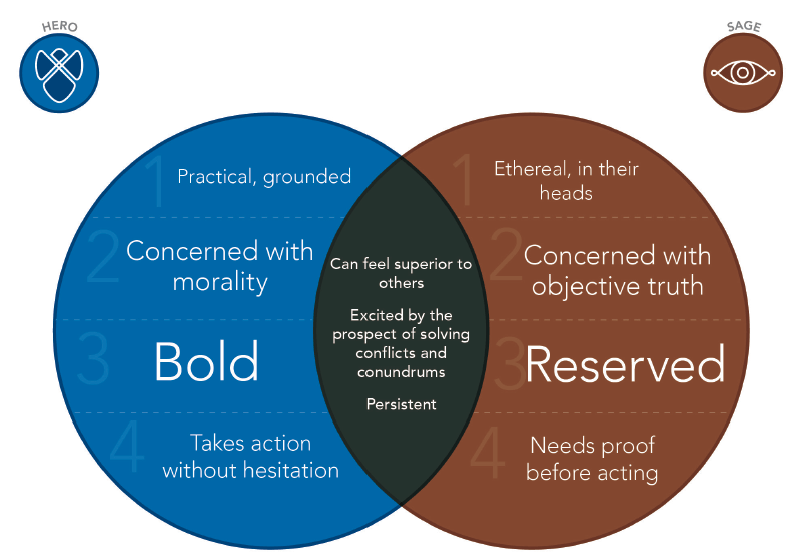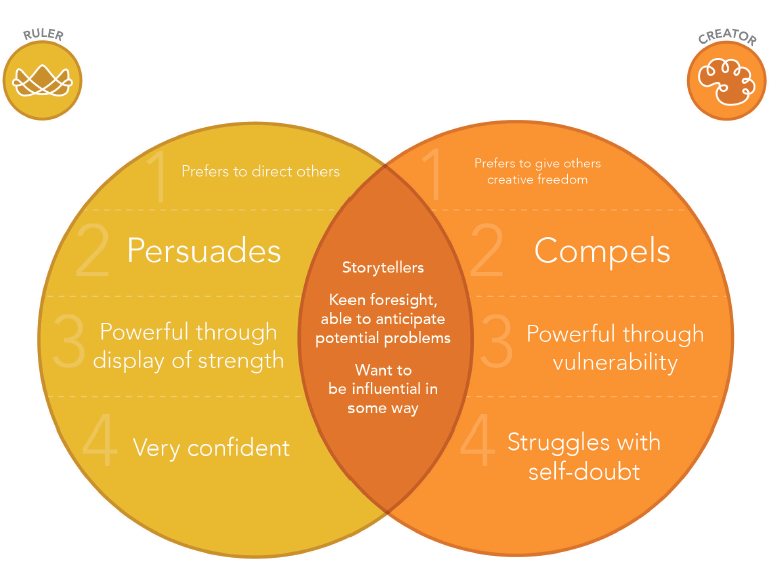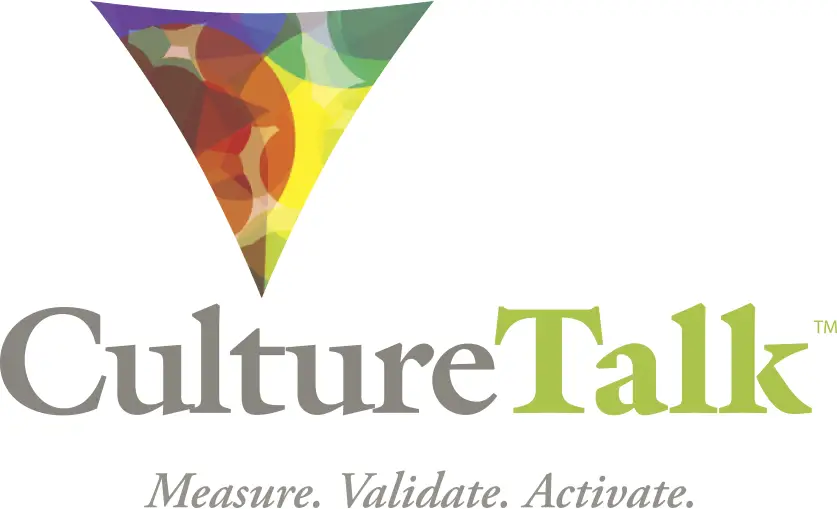Archetypes and Diversity
- June 22, 2022
- 5:22 pm
- Cynthia Forstmann
Why Storytelling is a Solid Foundation for DEI Work
CultureTalk was not designed as a tool to address diversity specifically. But as conversations about diversity, equity, belonging and inclusive workplace cultures heat up, organizations need new ways to move the needle.
In this session of Thursdays with CultureTalk, my CultureTalk cofounder, Theresa Agresta, and I discuss how the human-storytelling framework of Archetypes is being leveraged to lay a foundation and deepen these critical dialogues.
Listen in to learn the biological basis for storytelling – how it helps us align both brains and hearts – and you’ll start to understand why the impact of Archetypes goes well-beyond the potential of other systems in moving organizations forward.
No time to listen? Catch the highlights below.
(01:00) Welcome and Archetypes defined
New to CultureTalk? Here’s a brief overview of how CultureTalk offers an integrated view of culture, looking at both the organizational system, as well as the individuals and teams that are part of that larger system. We also introduce the framework of Archetypes and the idea that these stories are true for both individuals and organizations – that’s what makes them such great framework to bring together this conversation together!
(2:55) An Inclusive Workplace Culture
DEI work is getting renewed attention in the wake of a pandemic, political and social discord, and the Great Resignation. The critical question organizations are asking: How do we create organizations that are more human, inclusive workplace cultures where people really feel like they belong?
(4:15) DEI as a Side Effect or Extension of Story
While neither Theresa nor I are DEI experts we are seeing how the introduction of Archetypes in organizational and team culture conversations is creating a new lens for DEI work.
Whether we think about that as a side effect or extension of human story, we understand that professionals in the DEI-field are looking for new ways to facilitate these critical conversations.
“[…] Archetypes provide a fantastic foundation for this conversation around who am I, what's my story, how do I show up, and how do I want to be seen? It’s natural extension that flows into the diversity work. One of the core concepts is that we are human first.”
| Theresa Agresta, Cofounder, CultureTalk
(5:35) The power of story as a first lens
We discuss innovations in DEI and how powerful our own stories are. Regardless of our country of origin or gender identity, or the color of our skin, we all have stories, and we all have a story related to belonging.
We explore how Archetypes distill the idea that we’re so different from each other and help us identify the ways in which we are alike, and we can relate to each other’s experiences in very real human ways. Even when we look very different on the outside, on the inside share those motivational story-patterns.
(8:20) Archetypes offer a whole person approach
Instead of compartmentalizing personality traits into parts (i.e., leadership, communication) Archetypes invite people to show up fully in a way others assessment tools don’t. When working with Archetypes, people get more comfortable sharing more about themselves. Even close colleagues may learn new things about each other, formative stories that influence who they are today.
(12:40) Diversity of motivation, strengths, and perspective
Archetypes help us recognize that we have different motivations, different thinking styles, different approaches to problem-solving. Rather than counting the visible things that make us diverse, they offer a new lens.
Especially in today’s atmosphere where we are challenged to change and respond and react quickly to a lot of things that might be outside of our control, it’s effective to bring in a diversity of thought. To help illustrate this, we compare two Archetypes, and discuss the natural tension between these two types and why we need both:

(16:12) A Paradox: Vulnerability and Psychological Safety
Archetypes help us strike a balance between a willingness to be vulnerable and an environment that makes us feel safe. We explore why learning people’s stories helps us appreciate their unique gifts and build compassion. Even still, forming stronger team bonds through Archetypes also creates safe space. Teams have a new way of understanding difficult conversations and interactions – and a new language for naming what’s rubbing them the wrong way and what they need.
With Archetypes, people begin to see what that it’s the patterns that can cause conflict, but it’s not personal.
(18:23) Creating win-wins with diverse personality types
Archetypes provide an approach to problem-solving that releases resentment and makes space for healthy disagreements where both people can win.
How do we know this framework makes interpersonal conflict easier to resolve? We dive into two of our patterns – the clear-cut, direct Ruler Archetype and the winding, nuanced path of a Creator Archetype. Knowing this dynamic helps us keep things in perspective.

(20.25) Team Diversity and Development
Once a team has a grounding in Archetypes, they have a shortcut to recognizing – where am I in this moment? What pattern is active? Is it a health expression of that pattern – or am I in the shadow?
Hear about the many tools that help leaders and teams move from awareness to action, while continuing to honoring the diversity of Archetypes within the group. From resilience to communication to creativity, every Archetype has it’s own path to personal growth.
(21.29) A Foundation that Moves Organizations Forward
As teams work with Archetypes, they develop new ways becoming successful on repeat to accomplish an organization’s goals.
“Archetypes are simple and provide a short-cut in the moment, but over time they can help uncover the complex layers of human experience. They offer multiple paths to becoming better versions of ourselves, of our teams, and ultimately of our organizations.”
| Cynthia Forstmann, Cofounder, CultureTalk
(22.52) Why Story? We are wired for it
We jump into the biological basis for storytelling – how it helps us align both brains and hearts! It’s fascinating science that helps explain why stories are so impactful. The underlying impact of Archetypes goes well-beyond the potential of other systems.
(24.59) It’s all there and waiting
Story is as human as it gets. From water coolers to commercials to overhead conversations – can you catch how quickly you yourself and others fall into the familiar pattern of story?
The Archetype patterns are present in every human interaction – whether we measure them or not – and they are actionable. Whether you are looking to develop leaders or capitalize on the diverse perspectives of a team, you have all the raw ingredients.
(27:00) Should we focus on strengths?
A question comes in from LinkedIn: “Other systems focus on strengths. What differentiates the Archetype system from these other systems when it comes to identifying and applying your strengths?”
We discuss the multi-faceted development opportunity that exists with Archetypes through understanding both our strengths and our shadow traits. We jump back into the Sage Archetype pattern to consider how the shadows of that pattern can block success.
We discuss the idea that Archetypes exist along a continuum where the very things that make you strong could become the very same parents that hold you up the most too.
(32.10) Narrative Intelligence
While many people are familiar with the term “emotional intelligence” and the idea that we that understanding our own emotions and the emotions of others helps us navigate interpersonal relationships and teamwork.
We introduce a new concept called “Narrative Intelligence” that suggests knowing Archetype patterns is an aptitude that can be developed and then with this skill, we can use story patterns to develop ourselves, our teams, and our companies.
We underscore the opportunity of knowing and growing through shadow-recognition in toxic workplace cultures.
(34.15) Want more on Archetypes and DEI?
We recently sat down with DEI-expert Mercedes Martin to explore Building Cultures of Equity and Inclusion. It was enlightening to learn more about shifts unfolding in the world of DEI and how she is leveraging the Archetype framework to lay the foundation and deepen diversity conversations.
Or check out Hilary Blair’s TEDx Talk: Stereotypes vs. Archetypes for a thought-provoking view into the power of human story to break down shallow walls and deepen diversity conversations.
(35.20) Working in DEI? We’d love to hear from you!
If this conversation spurred some new thinking about the impact and opportunity of bringing Archetypes into your work – we’d love to talk to you!
Reach out to schedule a call – we’re always happy to share a CultureTalk assessment with you and provide a behind-the-scenes tour of resources available through CultureTalk.






